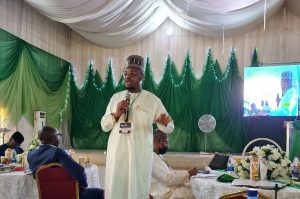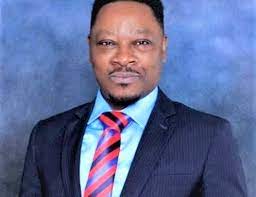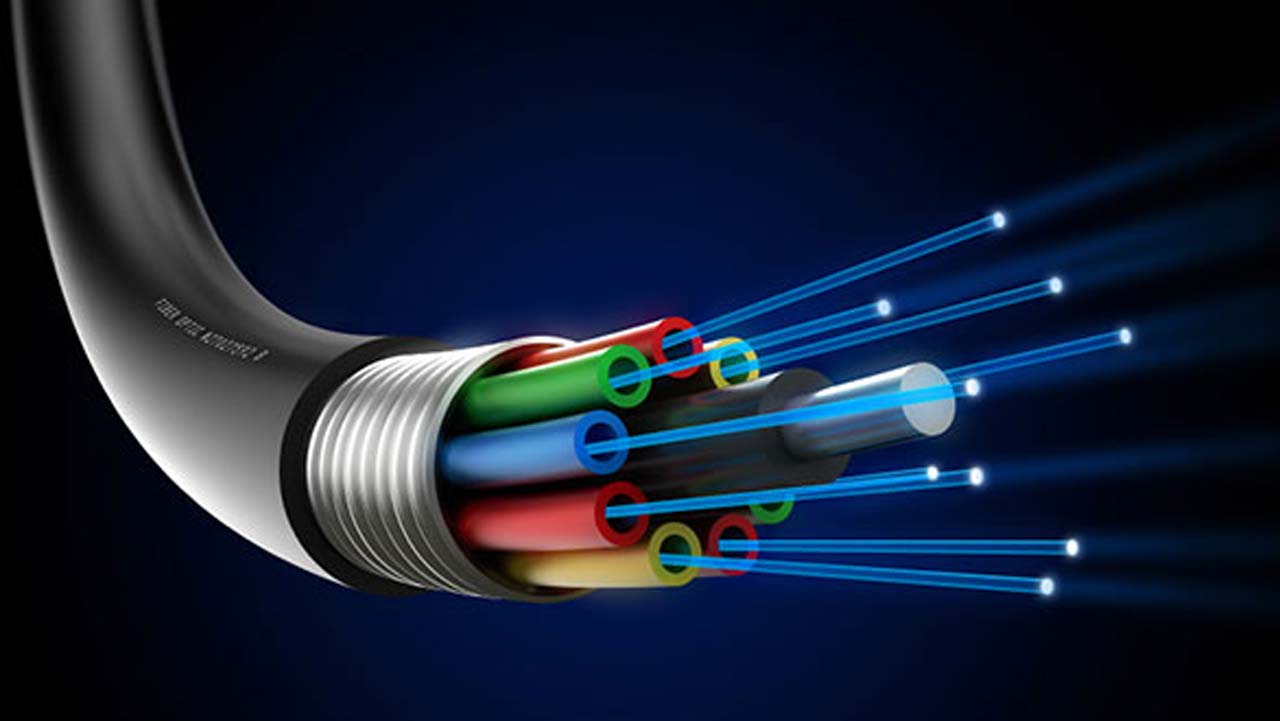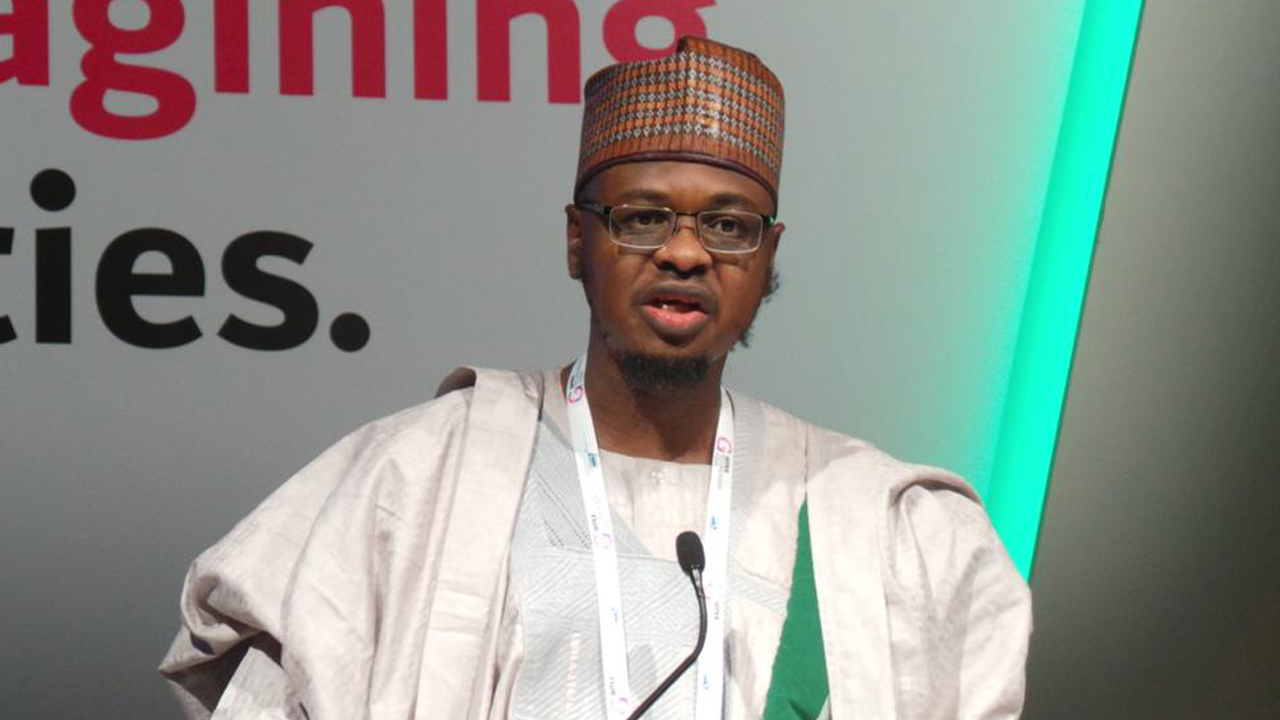Since the coming of Dr Isah Pantami as the Minister of Communications and Digital Economy, many digital experts have hoped to see the early delivery of Fixed Broadband alongside Mobile Broadband.
However, this was not to be seen as both the industry regulator, the Nigerian Communications Commission (NCC) and the Minister failed to cause State Governments to understand the gains of cheaper Right of Way (RoW) for Infrastructure Companies (InfraCos) to deliver service ducts across the nation.
Business Hilights recalls that InfraCos had for more than 10 years ago secured licenses, but cannot rollout due to issues bordering on RoW by states, endless Forex crisis, insecurity and failed NCC’s pledge to provide financial grant of N3 to N5Bn to InfraCos. Since 2017/18 the fund was announced by the regulator in conjunction with the apex bank, nothing again was heard about it. Besides, some InfraCo officials confided in our Correspondent that conditions and terms attached to accessing the fund are unreachable.
As Nigeria is left with the singular choice of Mobile Broadband, key business drivers like banks, heavy industries and deep pocket corporates had been exposed to momentary collapse of network services, thus causing monumental setbacks in the economy from time to time. Experts agree that such network collapses are rare under Fixed Broadband regime and that is why developed economies run more on Fixed Broadband than Mobile.

There had been serious debate on the sustainability of the jumping growth of broadband penetration as momentarily announced by the NCC. However, the fear is that whether a penetration powered by mobile internet is truly sustainable considering the level of wobbling and frustrations associated with peak usage periods in Nigeria.
To many observers, they expressed disappointment on the side of the Minister arguing that instead of mounting energy and using federal might on states to allow for seamless access to RoW so as to drive the last mile which will deepen the spread of landed Sub-Sea cables now rotting away at Lagos seashores, he is dissipating powers on balkanizing the lead industry regulator in favour of another sister agency, NITDA.
In his response, the President of Association of Telecoms Companies of Nigeria (ATCON) and Chief Executive of Medallion Group, Engr. Ike Nnamani averred that “The fixed broadband network and mobile broadband network serve two different purpose and segments. While the fixed broadband is mainly used for corporate purposes, the mobile broadband serves more of the individual end users.
Continuing, he added that “Both are important and none should be seen as more important than the other. Nigeria needs both. With changes in user requirements and demand for video streaming services individual users need high speed mobile network for a better user experience in the new multimedia age. This is why 4G, 5G, and even 6G services are becoming prevalent. On the other hand internet of things, big data, artificial intelligence, machine learning etc are changing the work space and making fixed broadband service critical to delivering of these new services for industries as well as broadband home use.”
However, another expert, Dr. Kunle Amosu stressed that “Whereas Mobile Broadband is what is available; Nigeria has no choice than to use it. But if we want to tell ourselves the truth, Fixed Broadband is the global digital economy standard everywhere.
“Fixed Broadband is the best driver of corporate growth, massive industrialization and seamless sustainable development.
Dr. Amosu further noted that “For the fact that Nigerians have waited for NCC and their InfraCos to deliver the last mile endlessly, we are left with no other alternative than to go the way of mobile broadband.”

Key Issues Between Fixed and mobile broadband
There are only two popular ways for connecting to the Internet – one is through mobile data and the other is through fixed-line broadband connections. Through mobile data connectivity, you can connect to the Internet at any location with useable speeds and it has good signal and coverage in most of the locations. All you need is a SIM card with data plans and a compatible device which we can carry easily to any place.
Whereas with fixed broadband connections you can get Gigabit speeds with symmetrical download and upload speeds and very low latency when compared to mobile data. You have a dedicated broadband connection which is far more reliable and affordable though it is available only within your local network or home environment. Mobile Internet is usually used for Internet when people are on the move and need to perform quick tasks like online whereas they opt for a fixed line broadband Internet connection for a permanent and dedicated Internet connection for regular work and online activity.
Fixed broadband encompasses any high-speed data transmission to a residence or a business – i.e. a fixed location – using a variety of technologies, including cable, DSL, fibre optics, and wireless. Essentially, it refers to high-speed internet connections that are “always on” in fixed locations.
Otherwise, Fixed Broadband is an ultra-fast business internet connection that beams through radio signals. Fixed Broadband can give an internet speed of up to 1Gbps.
Understanding the different types of internet connections is imperative for any business looking for the best solution for their needs.
Fixed broadband encompasses any high-speed data transmission to a residence or a business – i.e. a fixed location – using a variety of technologies, including cable, DSL, fibre optics, and wireless. Essentially, it refers to high-speed internet connections that are “always on” in fixed locations.
This particular term does not include mobile connections, i.e. the transmission of data via cellular networks to mobile devices.
The type of fixed broadband connection you opt for will depend on various factors, including your location, the various packages available, and prices. The most common are as follows:
Digital Subscriber Line (DSL)
Cable modem
Fibre optic
Fixed wireless
Satellite
Broadband over power lines (BPL)
Let’s take a quick look at each.
Digital Subscriber Line or DSL
This technology transmits data using traditional copper phone lines that most businesses and homes already have installed. It is a tech that allows for much faster data transfer than the original phone line technology that used to be used for dial-up.
DSL speeds range from 128 Kbps to 3 Mbps. Compared to dial-up, the speed is impressive. However, comparing it to cable, fixed wireless broadband and other connections, it seems incredibly slow. It should be noted that DSL speeds continue to improve as technology advances.
Cable Internet (HFC -Hybrid Fibre Coaxial)
With cable internet, cable providers can use the coaxial infrastructure that delivers TV services (Foxtel for example) already in place to also provide broadband services. Transmission speeds are up to 100Mbps download and 1.5Mbps upload.

Fibre Optics
Fibre optic technology converts electrical data signals into light and uses incredibly thin transparent glass fibres to transmit the data. Thus, speeds far exceed what DSL or cable internet connections can provide. For example, with a fibre optic connection, you can get speeds of up to 1Gbps.
Though providers often advertise high speeds, the real speed you will get depends on a wide range of variables, including the distance between you and the fibre optic cable and how the service is configured.
Fixed wireless broadband connects your office to the internet via a wireless radio connection. This involves installing a unit similar to a satellite dish on your property, which will communicate with a similar unit placed on a tower or building that has direct line-of-sight.
This type of connection is often used to service areas that are sparsely populated or in remote areas, which would make installing a cable infrastructure prohibitively expensive. It’s also preferred over satellite connections due to better speeds and reliability.
Satellite Connections
Satellite connections take advantage of satellites to connect to the internet. It’s a form of wireless broadband and is often used to service remote areas as well. However, it has quite a few limitations, including low speeds – the average download is 500 Kbps and the average upload is approximately 80 Kbps – reliability issues as weather can affect the quality of the service, and expense mainly owed to data caps.
Broadband over Power Lines (BPL)
Broadband over Power Lines uses the electricity distribution network to deliver an internet connection. Speeds tend to be on par with DSL and cable modem connections, though technology is advancing in this area as well and we are likely to soon see much better speeds.
BPL has a lot of potential because power lines are practically everywhere, meaning that more customers would be able to access the internet. After all, with BPL, as long as you have electricity, you’ll be able to access the internet.









